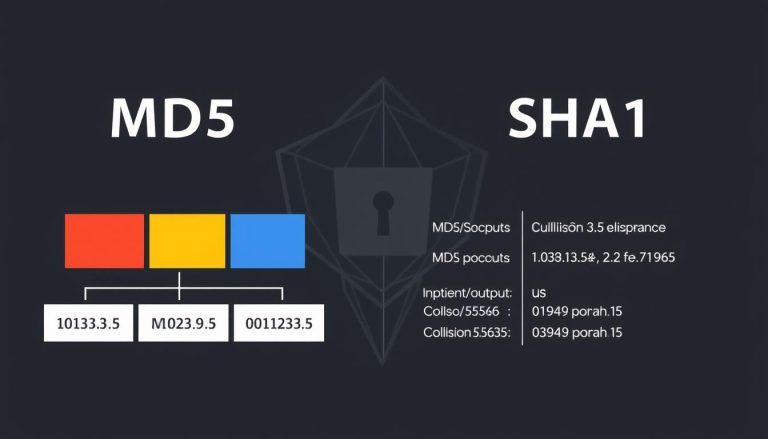Have you ever wondered how multiple devices in a home network can share a single public IP address? The answer lies in Network Address Translation (NAT), a clever technology that acts as a translator between private and public IP addresses. In this article, I will explain the concept of NAT and its significance in managing data traffic and ensuring network security.
Key Takeaways:
- NAT allows multiple devices to share a single public IP address in a home network.
- NAT enhances security by hiding devices behind a single IP address.
- There are different types of NAT, including Static NAT, Dynamic NAT, and Port Address Translation (PAT).
- NAT can introduce latency and complicate certain applications.
- Understanding NAT configuration and NAT vs PAT can help in effectively utilizing this technology.
The Types and Benefits of NAT
Network Address Translation (NAT) encompasses various types that offer unique benefits. Understanding these types can help in effectively utilizing NAT in your network. Let’s explore the different NAT types and their advantages:
NAT Types
- Static NAT: This type assigns a private IP address to a specific public IP address, allowing for one-to-one mapping. Static NAT is beneficial when you need to establish a direct and secure connection between a specific device in your network and the public internet.
- Dynamic NAT: Unlike static NAT, dynamic NAT dynamically assigns available public IP addresses from a pool to devices within the network, allowing for many-to-many mapping. Dynamic NAT is useful for networks with multiple devices that require access to the internet. It optimizes the use of public IP addresses, maximizing connectivity.
- Port Address Translation (PAT): PAT uses unique port numbers to differentiate between connections and allows multiple devices to share a single public IP address. This type is commonly used in home networks and small businesses, as it conserves public IP addresses and facilitates efficient data communication.
NAT Benefits
- Enhanced Security: NAT acts as a barrier between the devices in your network and the internet, making it difficult for unsolicited traffic to directly reach your devices. This adds an extra layer of protection against potential threats.
- Simplified Network Management: With NAT, you can manage multiple devices with private IP addresses using a single public IP address. This simplifies the management process, making it easier to monitor and control network traffic.
- Improved Efficiency: NAT optimizes the use of public IP addresses, allowing multiple devices to access the internet using a single IP address. This improves efficiency in managing data traffic and ensures seamless connectivity within your network.
| NAT Type | Mapping | Advantages |
|---|---|---|
| Static NAT | One-to-One | Secure direct connection between a specific device and the internet |
| Dynamic NAT | Many-to-Many | Efficient utilization of public IP addresses in networks with multiple devices |
| Port Address Translation (PAT) | Many-to-One | Conserves public IP addresses and facilitates efficient data communication |
Understanding the types and benefits of NAT allows you to make informed decisions when configuring your network. It enables you to strike a balance between security, connectivity, and efficient data traffic management.
The Drawbacks of NAT and Examples of NAT Usage
While Network Address Translation (NAT) provides numerous benefits to home networks, it is important to acknowledge its drawbacks. NAT can introduce latency and impact network performance, particularly when there are a large number of devices in the network. This delay is due to the translation process that occurs as data passes through the NAT router. It is crucial to consider the potential impact on real-time applications, such as online gaming or video conferencing, where a delay can hinder the experience.
In addition to latency concerns, NAT can also create issues with certain applications that require direct communication with external servers. For example, applications that require incoming connections, like peer-to-peer file sharing or hosting servers, may struggle when behind a NAT. Since NAT assigns a single public IP address to multiple devices, it becomes challenging for external servers to establish direct connections with specific devices within the network.
To better understand the limitations of NAT, let’s explore some common examples of its usage:
Example 1: Imagine a scenario where a home network utilizes NAT to connect multiple devices, including smartphones, computers, and smart home devices, to the internet. NAT allows all these devices to share a single public IP address, enhancing security by masking the individual devices. However, if there is a need to host a server, such as a personal website or a game server, NAT can complicate the setup and make it difficult for external users to establish direct connections.
Example 2: NAT is commonly used in small office or home office (SOHO) environments where a single router connects multiple devices to the internet. In this setup, NAT acts as a barrier between the private network and the internet, preventing unsolicited traffic from reaching the devices directly. However, NAT’s translation process can introduce latency issues, impacting the overall network performance, especially in bandwidth-intensive applications like video streaming or online gaming.
While NAT offers valuable benefits in terms of security and efficient management of network traffic, it is essential to consider the drawbacks and potential limitations it brings. By understanding these disadvantages and exploring suitable alternatives or configurations, network administrators can ensure optimal performance and address the specific needs of their network.
The NAT Configuration and NAT vs PAT
NAT configuration is a crucial step in utilizing Network Address Translation (NAT) effectively. It involves setting up the router to perform the necessary translations between private and public IP addresses. There are two main methods of NAT configuration: manual and automatic.
In manual configuration, administrators manually assign static mappings between private and public IP addresses. This method provides a high level of control and allows for specific devices to have dedicated public IP addresses. However, it can be time-consuming and requires a good understanding of IP addressing.
Automatic configuration, on the other hand, is accomplished through dynamic protocols such as DHCP (Dynamic Host Configuration Protocol). DHCP dynamically assigns available public IP addresses from a pool to devices within the network, simplifying the setup process and reducing the chances of configuration errors. This method is especially useful in scenarios where there are a large number of devices in the network.
Now, let’s compare NAT and PAT. While NAT allows multiple devices to share a single public IP address, Port Address Translation (PAT) takes it a step further. PAT uses unique port numbers to differentiate between connections and allows multiple devices to share a single public IP address with the help of Network Address and Port Translation (NAPT). PAT can be seen as an extension of NAT, providing additional flexibility and scalability.
Table: Comparison of NAT and PAT
| NAT | PAT | |
|---|---|---|
| Definition | Network Address Translation | Port Address Translation (with NAPT) |
| Mapping | One-to-one private to public IP | Many-to-one private to public IP (using port numbers) |
| IP Address Sharing | Allows multiple devices to share a single public IP address | Allows multiple devices to share a single public IP address using different port numbers |
| Flexibility | Provides basic IP address translation | Offers enhanced flexibility and scalability |
As shown in the table, NAT and PAT serve different purposes. NAT is suitable for scenarios where one-to-one private to public IP mapping is required, while PAT is ideal for situations where many devices need to share a single public IP address using different port numbers. Both NAT and PAT play vital roles in managing data traffic and ensuring secure communication within home networks.
Conclusion
In conclusion, Network Address Translation (NAT) is a vital protocol that allows multiple devices in a network to share a single public IP address. NAT acts as a translator, converting private IP addresses into a single public IP address assigned to the router. This enhances security by hiding devices behind a single IP address and ensures that data reaches the correct device within the network. NAT plays a crucial role in managing data traffic and keeping home networks connected and secure.
While NAT provides numerous benefits, such as improved security and simplified network management, it also has some drawbacks. NAT can introduce latency and slow down network performance, particularly with a large number of devices. It can also complicate certain applications that require direct communication with external servers, and limit peer-to-peer connections and hosting of servers.
Understanding NAT types, configuration, and the difference between NAT and Port Address Translation (PAT) is important for effectively utilizing this technology. NAT configuration involves setting up the router to perform the necessary translations between private and public IP addresses, either manually or automatically using dynamic protocols. Overall, NAT is a crucial component in ensuring efficient communication between devices and the internet, and plays a significant role in keeping home networks connected and secure.
FAQ
What is Network Address Translation (NAT)?
Network Address Translation (NAT) is a clever technology that allows multiple devices in a home network to share a single public IP address. NAT acts as a translator, converting the unique private IP addresses of devices within the network into a single public IP address assigned to the router.
What are the types and benefits of NAT?
There are different types of NAT, including Static NAT, Dynamic NAT, and Port Address Translation (PAT). Static NAT assigns a private IP address to a specific public IP address, allowing for one-to-one mapping. Dynamic NAT dynamically assigns available public IP addresses from a pool to devices within the network, allowing for many-to-many mapping. PAT uses unique port numbers to differentiate between connections and allows multiple devices to share a single public IP address. NAT enhances security by making it difficult for unsolicited traffic from the internet to directly reach the devices. It also simplifies network management and improves efficiency in managing data traffic.
What are the drawbacks of NAT and some examples of NAT usage?
NAT can introduce latency and slow down network performance, especially when there are a large number of devices in the network. It can also cause issues with certain applications that require direct communication with external servers. Additionally, NAT can complicate peer-to-peer connections and limit the ability to host servers. Examples of NAT usage include home networks, small office networks, and enterprise networks where multiple devices need to share a single public IP address.
How is NAT configured and what is the difference between NAT configuration and NAT vs PAT?
NAT configuration involves setting up the router to perform the necessary translations between private and public IP addresses. This can be done manually by assigning static mappings or automatically using dynamic protocols such as DHCP. NAT vs PAT refers to the difference between using port address translation (PAT) and traditional network address translation (NAT). PAT uses unique port numbers to differentiate between connections and allows multiple devices to share a single public IP address, while NAT assigns private IP addresses to specific public IP addresses.
Matt is doing business in information technology since 1992. After discovering Linux he soon fell in live with Windows Operating System.


